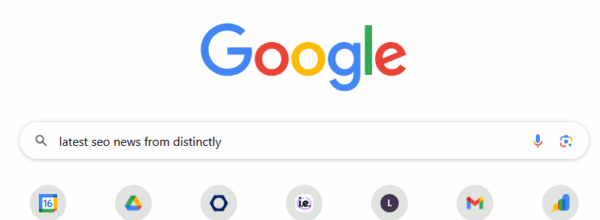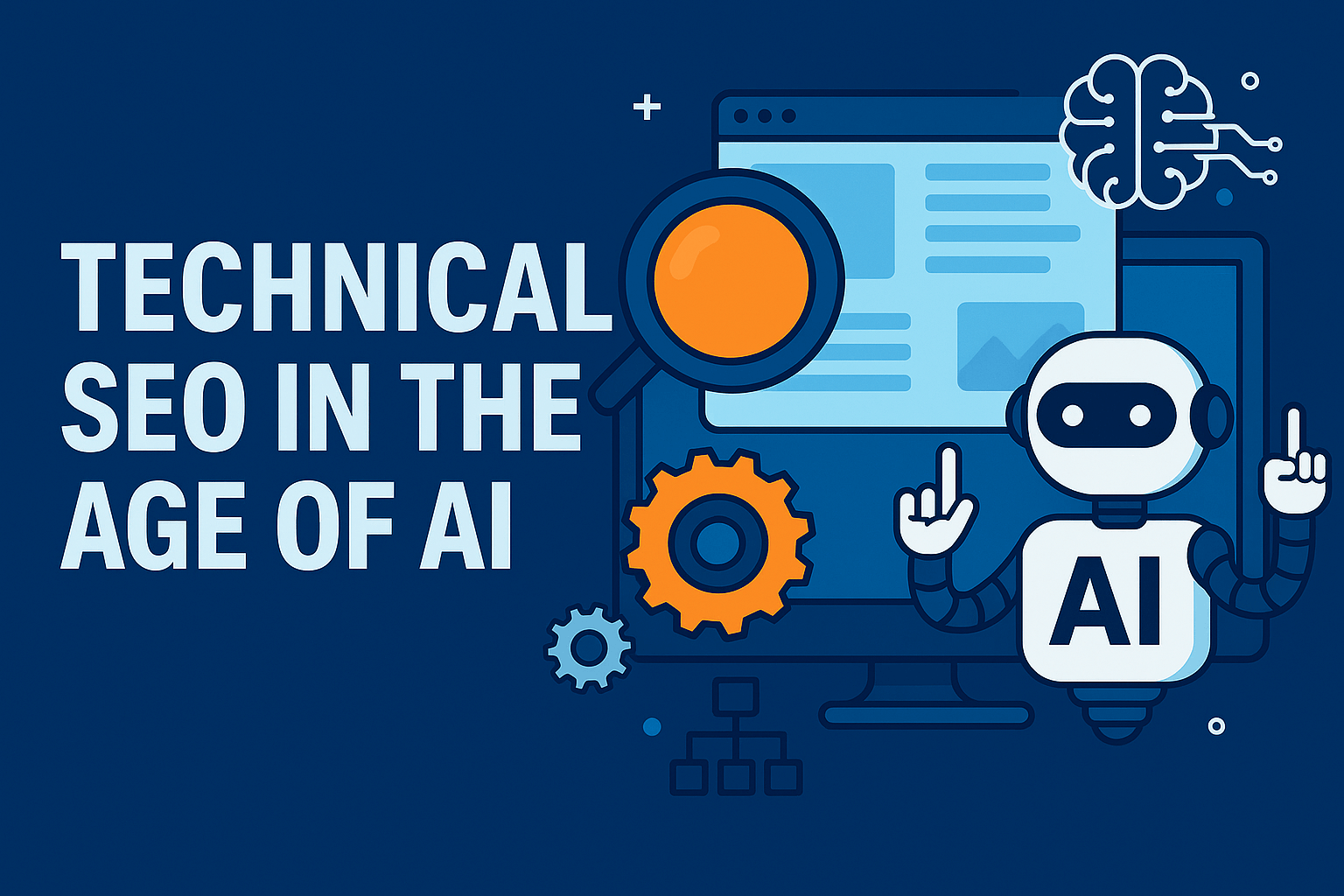Organic News Round Up – January 2025
We’ve compiled the essential updates from Google and the world of SEO, digital PR and organic search from January – keeping you up to date with everything you need to know!
Covering:
- Google removes breadcrumbs from mobile SERPs
- Links still matter
- Links also matter for LLMs
- Ranking in Google’s free e-commerce listings
- LinkedIn says short-form video is its fastest-growing content category
- Clampdown on fake Google reviews announced
- The importance of amplifying content
- LLMs are influencing consumer decisions
- LLMs are increasing the importance of being visible off-site
- Most UK news websites are losing visibility year on year
- State of Digital PR report
Google removes breadcrumbs from mobile SERPs
You may have noticed that Google’s mobile search interface feels a little different recently. As of 23/01/25, breadcrumbs have been removed from mobile search results.
Previously, site folder structures appeared beneath titles, giving users more context about the page they were clicking on. Now, mobile search displays only the domain name, simplifying the snippet view.
Google clarified that this update aims to enhance readability on smaller screens, where breadcrumbs were often truncated. This change has been rolled out globally.
One could argue that this change means context is lost and it makes all pages look like website homepages. We also wonder if this update will eventually extend to Paid Ads as part of Google’s ongoing efforts to blur the lines between organic and paid search results.
It’s worth noting that breadcrumbs will still appear in desktop search results, and no changes to site markup are required.
New mobile layout:
Existing (and continuing) desktop:
A few years ago, Google stopped displaying full URL paths on desktop search results, opting for shorter breadcrumb trails. Depending on the breadcrumb length, this often resulted in users not seeing the full structure of a site. Here is an extension that overwrites this which you can use if you want that bigger picture when browsing the SERPs.
Links still matter
Four years ago, Ahrefs ran a study called “do links still matter?” where they disavowed all links from 3 high traffic pages resulting in immediate drops in ranks and traffic – see example charts below:
Last week, they released another study, aimed at understanding if the importance of links had changed over time and found that links still correlate with better rankings, albeit slightly less than before.
The data confirms that while Google’s reliance on backlinks has decreased, they remain a critical ranking factor, particularly for high competition and search volume queries.
Interestingly, links are more impactful for local terms, probably due to more homogenous content and links making a useful differentiator.
Author of the study and one of Ahrefs’ top SEOs, Patrick Stox says:
“With the rise of AI content, I suspect Google may end up relying on links or other signals more, and may start weighting them higher”
“The way I view it is that companies, especially local companies, probably should focus on at least foundational links. Larger companies likely already have marketing efforts and content bringing them links, so links may not be as much of a priority. However, when pages for large companies need a push, I’ve seen even internal links give a nice boost.”
Our view is that links are a critical component of any SEO strategy but only when targeted to specific pages and used in tandem with amplifying topical expertise.
Links also matter for LLMs
Just as backlinks remain critical for SEO, they also indirectly influence large language models (LLMs). According to a November study, LLMs are trained on curated datasets heavily composed of high Domain Authority websites. These high DA sites are chosen because their strong backlink profiles indicate credibility and quality. This means that backlinks signal not only SEO relevance but also the trustworthiness of data that AI models rely on.
Ranking in Google’s free e-commerce listings
This was an interesting share from Brodie Clark last week around maximising Google’s free e-commerce real estate (product grids, product knowledge panels, the shopping tab, etc.) and where/how Google prioritises its data sources.
At present Google will pull content from different sources (the web page, GMC feeds or Structured Data) and this can cause contradictions and exclusions. Google is rumoured to be working on unifying and simplifying things here, so watch the space.
Brodie summarises:
“In general, the best approach is to provide as much rich content to Google across each surface (content, feeds and structured data) and for there to be consistency among the surfaces for best results”.
LinkedIn says short-form video is its fastest-growing content category
Short-form video has become LinkedIn’s fastest-growing content type, says Linkedin.
Key updates include:
- Viewership is up 36% YOY, with video creation growing at twice the rate of other content formats.
- LinkedIn’s vertical video feed and creator support programs have contributed to this growth.
- Brands are investing more in LinkedIn video campaigns, benefiting from longer engagement times compared to TikTok and Instagram.
LinkedIn continues to prioritise video in its algorithm, giving creators and businesses more reason to focus on the format.
If we know Linkedin users are spending more time consuming short-form video content, marketers should start ensuring a percentage of Linkedin output is in this format moving forward. If you already have video content banked that’s being used on other platforms, it’s worth trying it out on Linkedin where appropriate.
Clampdown on fake Google reviews announced
Google has announced a crackdown on fake reviews following an investigation by the UK’s Competition and Markets Authority (CMA). The company will implement stricter measures to detect and remove fraudulent reviews, including:
- Stricter detection and removal of fraudulent reviews.
- Sanctions for offenders, including bans for those who repeatedly post fake reviews.
- Business penalties, such as warnings and deletion of reviews for businesses manipulating their ratings.
- A streamlined system for consumers to report suspicious or incentivised reviews.
These actions aim to enhance trust in online reviews and create a fairer marketplace for both consumers and businesses. However, enforcement and long-term maintenance of these measures will likely be challenging. It feels more like Google is making promises to satisfy the CMA than anything else.
The importance of amplifying content
This Drum article from December caught our attention last week around maximising PR coverage for brands. The piece emphasises the importance of amplifying content to enhance brand visibility and drive engagement:
The challenge isn’t just getting coverage; it’s about making that coverage work harder. This means amplifying it through the right channels and ensuring it’s aligned with your broader business goals.
Some key concepts:
- Sharing PR coverage on social media to reach a broader audience and spark conversations – the hard thing is earning the coverage, but how often are we amplifying that on social channels to people already interested in our brands? This also applies to customer reviews.
- How often are we adding media mentions to newsletters, blogs, and other marketing materials to boost credibility?
- Should we be tactically using paid promotion to ensure PR coverage reaches targeted audiences beyond organic visibility?
By focusing on these tactics, brands can maximise the value of their PR efforts, aid in brand-building and achieve stronger holistic results.
LLMs are influencing customer decisions
There has been a significant shift in how consumers engage with brands online accompanied by the rise in AI Chat. A recent poll from the Drum has shown that over 66% of 18-20 year-olds regularly use LLMs for brand advice, with 35% expecting these tools to aid them in finding the best brands or products to suit their needs.
Trust in LLMs is also growing, with 47% of consumers believing they will deliver good – or even the best – recommendations. It’s clear that LLMs are already shaping purchasing decisions, and have been for a while, so as these tools continue to evolve consumer reliance is likely to increase… as does the the need for brands to be visible on these platforms.
LLMs are increasing the importance of being visible off-site
A recent study found that AI assistants like ChatGPT and Bing Chat rely heavily on news and media outlets, business sites, and digital media platforms when generating responses.
This ties in with the growing digital focus of 2025 around strengthening off-page credibility through a range of different trust signals, including brand mentions and social media presence.
Multi-channel awareness strategies which encompass all of these elements are now a must, beyond traditional link-building tactics.
Most UK news websites are losing visibility YoY
This post from Barry Adams on Linkedin provides an interesting overview of visibility changes for some of the UK’s top publishing websites over the past year. It highlights just how challenging 2024 has been for the majority of them.
For anyone who’s visited a more tabloid-focused site recently, the user experience (cluttered with endless ads and shifting content) might make this trend less surprising. The visibility chart tracks percentage changes compared to a year ago, and it’s striking to see household-name, nationwide press filling the bottom 10 spots:
If we look at SISTRIX’s UK visibility winners table, we can identify which sites managed to grow the most in 2024:
We know:
- Reddit saw the biggest growth of any website in 2024.
- Video-based social media channels are gaining more SERP space as Google tries to stay relevant to younger audiences.
- Tabloid press, which targets generic queries to attract traffic for ad-heavy pages, may be losing out as social media offers quicker, more relevant answers to users.
- The BBC has experienced significant growth, benefiting from its reputation as a trusted source of truth online.
State of Digital PR report
The State of Digital PR 2025 report by Buzzstream was released last week which contained data from 150 industry respondees on the nuances around digital PR.
One thing that jumped out was how much clients are spending on digital PR services, with nearly half spending between $5,000-$20,000 per month, highlighting the importance links and awareness brings to brands.
The role of hero campaigns in Digital PR
According to the report, 78% of digital PR tactics still involve pitching large-scale creative ‘hero campaigns’, highlighting their continued importance in brand strategies, though the industry remains divided on their long-term value.
Hero campaigns are designed to generate significant buzz and secure widespread media attention. Despite this, there is a growing trend towards quicker, more reactive tactics, such as expert commentary or rapid responses to breaking news, which cater to the fast-paced demands of digital media.
While these reactive strategies offer immediate coverage, they raise an important question: how do hero campaigns fit into a strategy that prioritises speed and agility?
Hero campaigns continue to provide distinct advantages:
- They help shape wider brand perception, positioning a brand as a thought leader.
- They create evergreen content, building long-term authority on specialist topics.
- With the rise of LLMs, hero campaigns offer opportunities to influence AI-driven search results by creating rich and brand-specific content.
However, as AI continues to shape search and content discovery, brands need to adapt their hero campaigns to maintain impact, with a key consideration being the structuring and technical back-ends of campaign content to ensure Google (and LLMS) are aware of it.
We believe hero campaigns remain a critical strategy for many brands. By evolving with the changing digital landscape, these campaigns can continue to drive visibility, influence perception, and solidify authority in an increasingly competitive market.
Stay Ahead in SEO with Distinctly
Enjoyed our January roundup? Stay updated with the latest organic trends, tips, and exclusive insights by subscribing to our newsletter.



